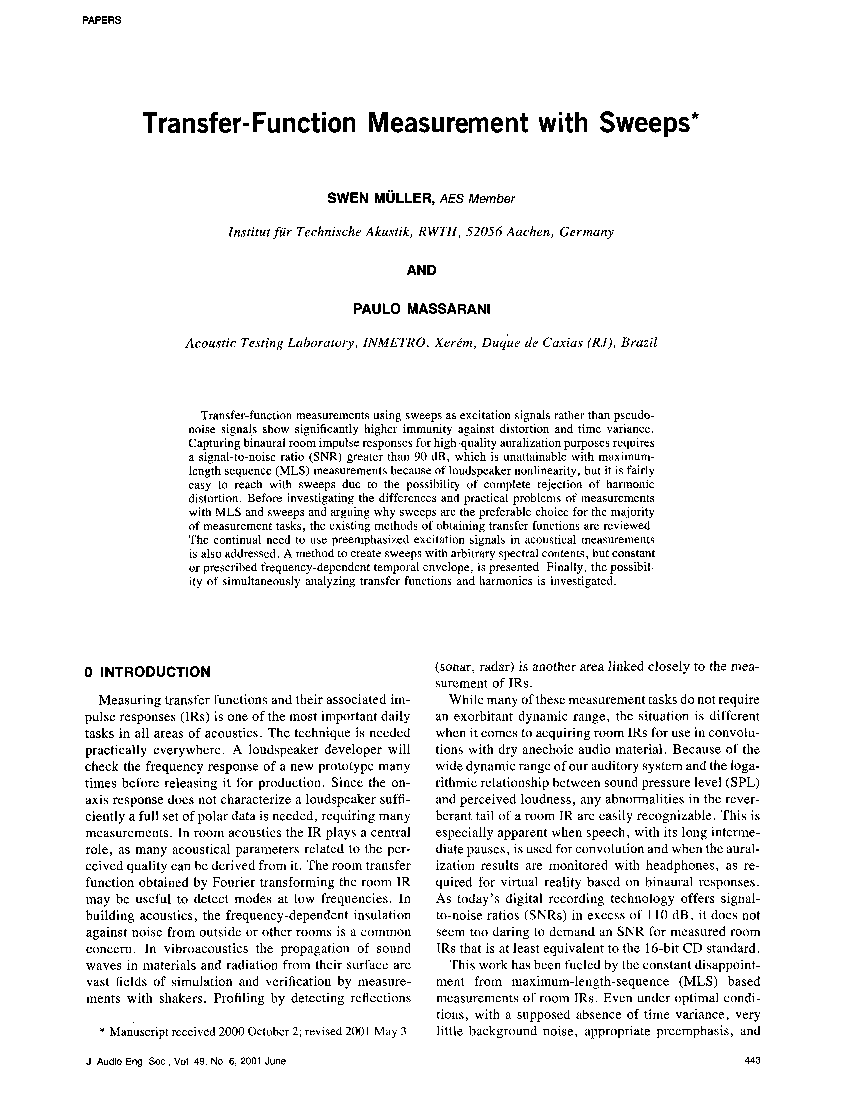Home / Publications / E-library page
You are currently logged in as an
Institutional Subscriber.
If you would like to logout,
please click on the button below.
Home / Publications / E-library page
Only AES members and Institutional Journal Subscribers can download
Transfer-function measurements using sweeps as excitation signals rather than pseudo-noise signals show significantly higher immunity against distortion and time variance. Capturing binaural room impulse responses for high-quality auralization purposes requires a signal-to-noise ratio (SNR) greater that 90 dB, which is unattainable with maximum-length sequence (MLS) measurements because of loudspeaker nonlinearity, but it is fairly easy to reach with sweeps due to the possibility of complete rejection of harmonic distortion. Before investigating the differences and practical problems of measurements with MLS and sweeps and arguing why sweeps are the preferable choice for the majority of measurement tasks, the existing methods of obtaining transfer functions are reviewed. The continual need to use preemphasized excitation signals in acoustical measurements is also addressed. A method to create sweeps with arbitrary spectral contents, but constant orprescribed frequency-dependent temporal envelope, is presented. Finally, the possibility of simultaneously analyzing transfer functions and harmonics is investigated.
Author (s): Müller, Swen; Massarani, Paulo
Affiliation:
Acoustic Testing Laboratory, INMETRO, Xerdm, Duque de Caxias (RJ), Brazil
(See document for exact affiliation information.)
Publication Date:
2001-06-06
Import into BibTeX
Permalink: https://aes2.org/publications/elibrary-page/?id=10189
(7011KB)
Click to purchase paper as a non-member or login as an AES member. If your company or school subscribes to the E-Library then switch to the institutional version. If you are not an AES member Join the AES. If you need to check your member status, login to the Member Portal.

Müller, Swen; Massarani, Paulo; 2001; Transfer-Function Measurement with Sweeps [PDF]; Acoustic Testing Laboratory, INMETRO, Xerdm, Duque de Caxias (RJ), Brazil; Paper ; Available from: https://aes2.org/publications/elibrary-page/?id=10189
Müller, Swen; Massarani, Paulo; Transfer-Function Measurement with Sweeps [PDF]; Acoustic Testing Laboratory, INMETRO, Xerdm, Duque de Caxias (RJ), Brazil; Paper ; 2001 Available: https://aes2.org/publications/elibrary-page/?id=10189